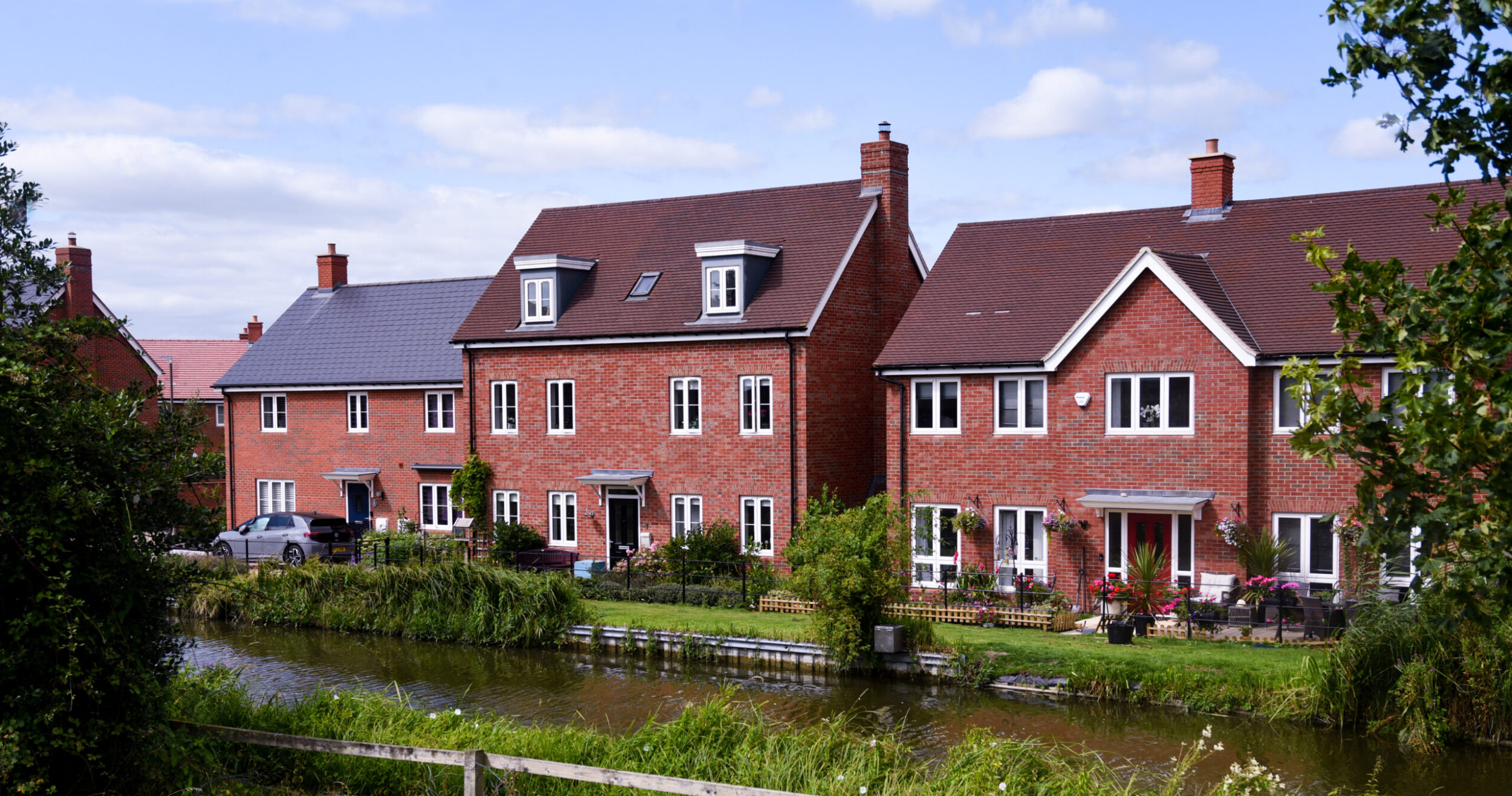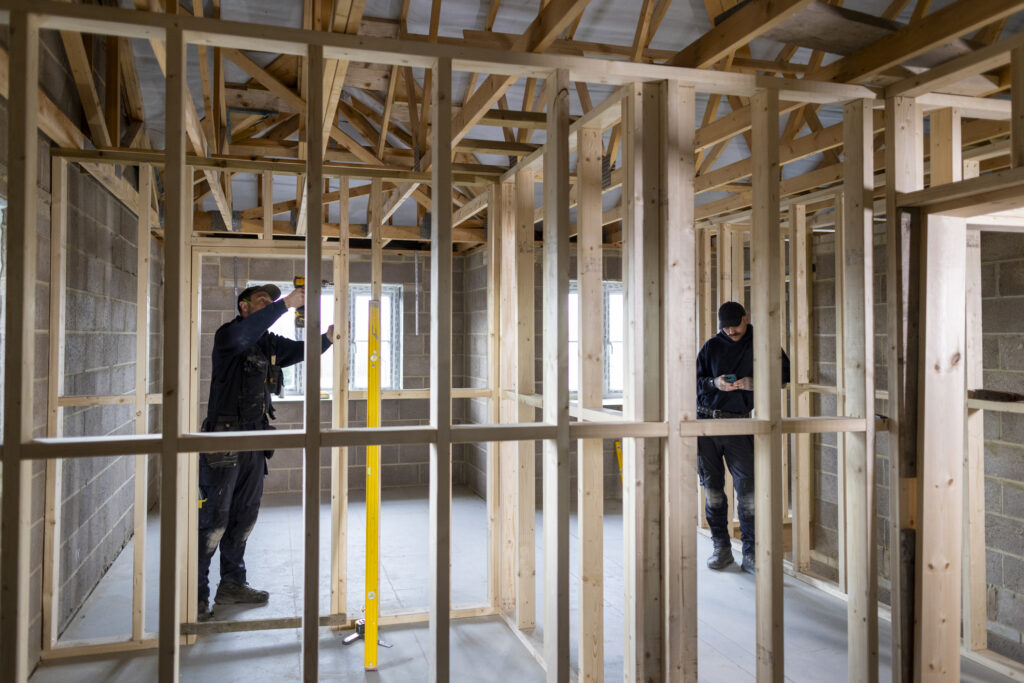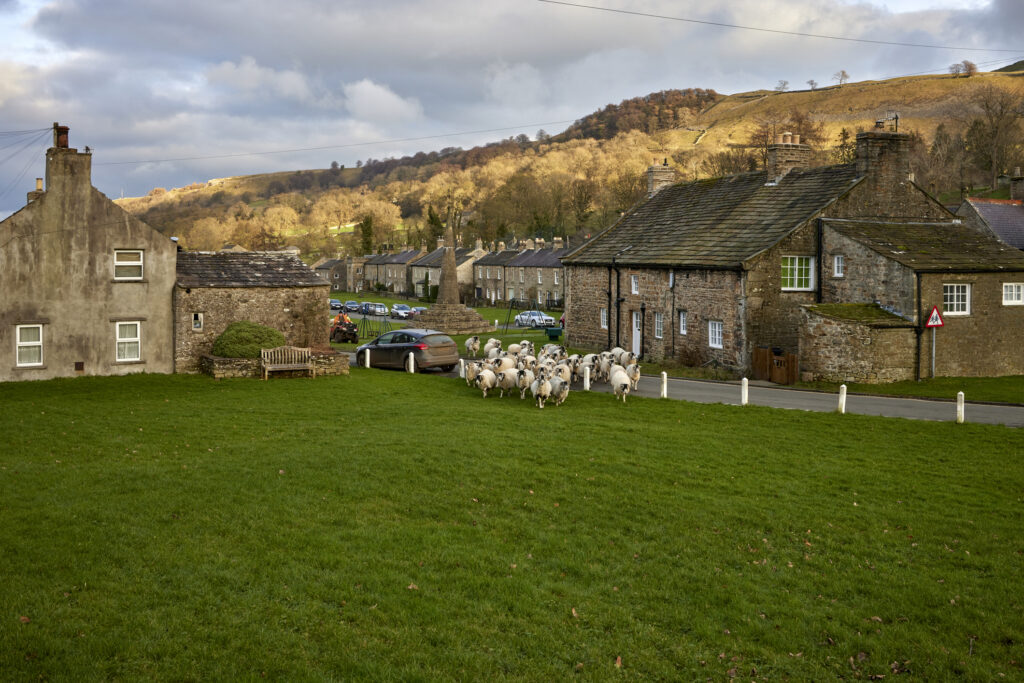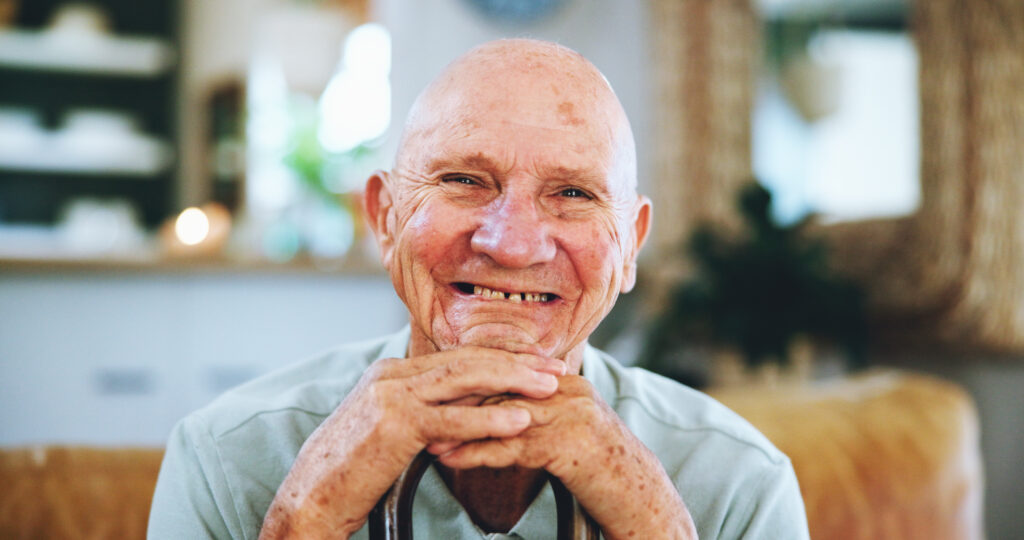
Trialling a new model with the help of a loan
“We spoke to several lenders. It was like banging our heads against a brick wall. Then we approached Charity Bank, and it was a case of, ‘Yes, fine, no problem.’” Read our interview with Andrews Charitable Trust.
Andrews Charitable Trust bought its first four properties without finance but wanted to trial a new model for the next four. To do that, it needed to take out a loan. Siân Edwards, Executive Director of Andrews Charitable Trust, and Nathan Moore, Business Implementation Manager, tell us more…
Can you start by telling us about Andrews?
Siân: Andrews is a property business. It was founded by Cecil Jackson Cole, who also set up Age UK, Oxfam and ActionAid. He was ahead of his time, really interested in social impact and driven by his Christian faith. So, charitable work has always been in our DNA. The business is now solely owned by Andrews Charitable Trust.
The main focus of the trust is tackling housing-related poverty by supporting people who struggle to use the general housing market. Until recently, it’s done so by funding other charities, but a few years ago, we decided to set up our own project – Establish. We want to have a house that’s doing social good in every community that Andrews works in. To achieve that, we’ve set a target of buying 50 houses within 50 years.
How are you funding those properties?
Siân: The company sold part of its business, so we had a large dividend about four years ago. By using that money, we were able to buy our first four properties, which now house young people at risk of homelessness. We located youth-focused charities to lease the properties to, so that they could support the tenants. So we bought the property, but the charity runs it, and we provide them with a small grant to do that.
We knew from the very beginning that buying properties solely with the profits from the business was not going to be sustainable. Plus, the small grant that we pay to the charities to manage the properties will add up to around £200,000 a year once we get to 50 houses. So, we decided to test an alternative model and a different way of funding the purchase costs. We have a commercial property in Islington, so we leveraged that to get a loan from Charity Bank to buy our next four properties. All four new properties are using the new operating model.
Tell us about the new model you’re trialling.
Nathan: With the old model, the charity partner looks after everything and we get paid rent (below market value). For the new model, the individual tenants will sign tenancy agreements directly with Andrews Charitable Trust. They’ll still have regular weekly support from a charity, but they’ll also have a relationship with Andrews. We have a lot of expertise in the property group, so we want to leverage that to manage the properties ourselves rather than handing them over to a charity. Changing the model also means we can better engage employees through volunteering, mentorship and so on.
Siân: There’s a huge need for move-on accommodation across the country, so one of our aims for Establish is to provide a model that can be rolled out by other charities.
Why did you turn to Charity Bank for the loan?
Nathan: We spoke to several banks and building societies, but when you say, “We’re going to charge below market rents and we want to pay the loan back from a different income stream rather than the income from the rents,” that’s too complex for most lenders to understand. It was a case of, “You want to do what? And how? We don’t understand your model.” It was like banging our heads against a brick wall.
Then we approached Charity Bank, and it was a case of, “Yes, fine, no problem, we can do that. We believe in your model; we believe in you.”
Siân: Only Charity Bank understood what we were doing and were open to an innovative model that hadn’t been tried and tested. We wanted an interest-only loan so that we could trial this new model, but we were putting up a commercial property as collateral, so it was pretty low risk, but the other lenders didn’t see it that way.
How did you find the loans process?
Nathan: The due diligence was quite hard, probably because Siân and I hadn’t done anything like this before. You’ve got to have your ducks in a row, and we had to conduct quite a few board meetings to discuss the required resolutions required in order for the trust to take on the loan, which were a bit complex and left us both scratching our heads. But Bernie Teggart and Carolyn Sims held our hands throughout the whole process. Charity Bank has been a really engaged partner all the way through, so it’s been an absolute privilege to have them as our lending partner.
Could you have bought the new properties without a loan?
Siân: Possibly, but that would have meant using all the money we normally give out in grants to effectively strengthen our balance sheet instead, which didn’t feel right. Plus, the Charity Bank loan has enabled us to buy four properties at the same time, rather than one a year.
We also considered whether smaller charities would be able to engage their donor base by raising investment that could then be matched by charitable foundations, but that was unlikely to get anywhere. We wanted to have a financial model that could be rolled out to other small charities, so we decided to keep it simple, which meant taking out a loan.
How did the trustees feel about taking out a loan?
Nathan: The charity has not been a big risk taker, but all the trustees were on board. It helped that we were leveraging an unencumbered investment property. The due diligence process and documentation provided by Charity Bank also gave the trustees confidence. Bernie and Carolyn came in to see us and talked about the bank’s proposition, where its money comes from, where it’s lent to and so on. That gave me even more confidence that we’d chosen the right partner to engage with for the loan.
Siân: Charity Bank seemed like a bridge between commercial banks and the social investment community, which helped. Plus, we’d already developed two policies within our finance and investment strategy for mixed-motive investments and programme-related investments, so we could explain everything to the trustees to help them better understand the risk.
Did you receive any outside grant funding?
Nathan: Yes. We’ve got a great relationship with LandAid, which has provided us with grant funding towards the cost of renovating two of the Charity Bank properties.
You were originally aiming to buy one property a year, but you’ve bought these four in quick succession. Are you going to take a break now before the next one?
Nathan: It has certainly been challenging, exciting and thoroughly rewarding and now we need to analyse where we currently are, take stock of both models, and really digest the various data insights that we have obtained over the past year.
Siân: We’ll probably run both models alongside each other for a full 12 months before deciding where to go. What we didn’t realise when we decided to try a new model was that the energy prices were going to go through the roof, and we’re now responsible for those. Interest rates have also gone up significantly, so we need to factor in all of that before we take our next step.
What would you say to other charities and social enterprises looking to take out a loan?
Siân: If a loan is the right answer to the question of “how do we get the money?” and you’ve got the capacity to take on a loan, I’d absolutely recommend Charity Bank. They understand loan financing for charities, and they’re not fazed by new ways of doing things.
What feedback have you had about the properties?
Nathan: The tenants feel valued. Most people take having a home for granted, but some of our tenants had been sofa surfing or homeless. One used to sleep in a cupboard under the stairs at his mum’s. The majority of these young people have gone through trauma. And I know this from my own experience of being a care leaver. I was put into a dirty bedsit with £35 and told to ring the local council for benefit advice
Care leavers often lack the basic skillsets that people usually gain by having a family unit – things like budgeting and caring for themselves, what a healthy relationship looks like and so on. They’ve had no consistency, no support. And now they’ve got that, plus help to get into work, training or further education.
“We’ve had around 40 people go through Establish so far. One who really stands out is a young person that I have had the pleasure of mentoring for 2 years. When I first met her, she was extremely shy and had very little confidence due to previous emotional trauma.
The Establish home has given her stability, which has given her an abundance of confidence. She enrolled on a social work course, became a social worker, left the Establish house to rent a home with her boyfriend, and she’s happy and flourishing.
That’s exactly what the project is all about – helping vulnerable young people to integrate into society.
I’m really proud of being a member of the board of trustees who have embraced innovative new ideas to support vulnerable young people that will enable them to thrive. And I’m really proud of Charity Bank for believing in us.” This makes me personally proud of the project.
If you need a loan for your housing project, please call Charity Bank on 01732 441919.
About Charity Bank
Charity Bank is the loans and savings bank owned by and committed to supporting the social sector. Since 2002, we have used our savers’ money to make more than 1380 loans totalling over £580m to housing, education, social care, community and other social purpose organisations.
Nothing in this article constitutes an invitation to engage in investment activity nor is it advice or a recommendation and professional advice should be taken before any course of action is pursued.


